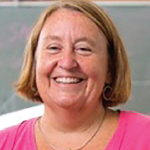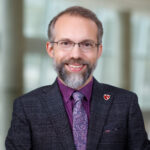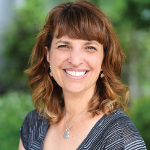
Africa Studio / shutterstock.com
It may not take a village, but when it comes to providing stellar care to rheumatology and musculoskeletal patients, it definitely takes a team. To ensure all rheumatology professionals are thoroughly prepared to serve their patients’ needs in a personalized manner, there is the ARP—the Association of Rheumatology Professionals.
The ARP, the interprofessional division of the ACR, focuses on advancing the mission of the College by providing interdisciplinary team members with access to specialized education, scientifically sound resources and a diverse network of rheumatology professionals from around the globe. The ARP serves more than 20 disciplines within rheumatology, including nurses, nurse practitioners, physician assistants, pharmacists, physical therapists and occupational therapists. Through volunteerism, each of these disciplines lends their voice to help the ARP engage, modernize and grow.
In return for their dedication and willingness to serve the College and the rheumatology specialty, ARP members receive unquantifiable benefits, such as professional and leadership development and more.
Here, The Rheumatologist talks with two volunteers on the Membership and Nominations Committee, both of whom have found a robust professional home within the organization.
Nadine M. Fisher, EdD, is director of the Rehabilitation Physiology Laboratory and the Rehabilitation Science PhD program in the Department of Rehabilitation Science at the State University of New York, University at Buffalo.
Laurie Hughell, PA-C, MPH, is a clinician at the Iowa Arthritis and Osteoporosis Center in Des Moines and adjunct professor at Des Moines University.
The Rheumatologist (TR): How did you get involved with volunteering for the ARP?

Dr. Fisher
NF: I became an ARP member 25 years ago and eventually got involved with volunteering after someone approached me at an annual meeting. I had just presented my dissertation research on osteoarthritis and was honored to be invited; I recall feeling welcomed into the fold.
Attending the annual meeting can be intimidating for young professionals just starting out because you see people on the podium whose papers you have read and then can actually meet them. But the individuals who encouraged me to get involved were so supportive that it all went very smoothly.
LH: I became involved with this multifaceted organization when someone recommended me to serve on the Government Affairs Committee, a subject area on which I had minimal prior knowledge. Although it was a steep learning curve, I enjoyed hearing more about the governmental influence on medicine and being able to lobby for rheumatology in D.C.
TR: What have been the most rewarding—and challenging—aspects of volunteering?
NF: The most rewarding aspect of devoting time to the ARP is that I have been exposed to a wonderful breadth of different perspectives on rheumatologic and musculoskeletal care. Each of the College’s committees provides volunteers the chance to see ‘behind the curtain’ and to walk away with a nuanced comprehension of how our field works and what pushes it (us) further.
On the challenging side, it is indeed daunting to just jump into something you know little about. For example, when I was asked to join the Membership and Nominations Committee, I told them I had no idea how such a group functions. ‘We’ll teach you!’ was their enthusiastic reply. They were supportive throughout my entire ‘onboarding’ and our group quickly coalesced and began addressing our tasks in a collaborative fashion.


